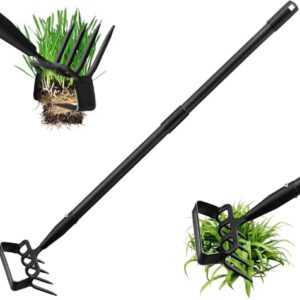Fall is a beautiful time of year, with the leaves changing colors and a crispness in the air. It’s also the perfect time to get some planting done in your garden before the winter chill sets in. But what exactly should you be planting, and when? Well, look no further – this Fall Planting Guide will help you navigate your autumn gardening to ensure a successful and bountiful season.
First things first – what should you be planting in the fall? The answer depends on your specific climate and growing zone, but there are some general guidelines that can help you get started. In general, fall is a great time to plant cool-season crops like lettuce, spinach, kale, and broccoli. These plants thrive in cooler temperatures and will produce a good harvest before the winter frost hits.
Root vegetables like carrots, beets, and radishes are also great choices for fall planting. These crops will develop deep roots during the fall months and be ready for harvest in the early spring. Plus, there’s nothing quite like the taste of a freshly harvested carrot straight from your garden!
Another option for fall planting is to sow cover crops like clover or rye grass. These plants help add nutrients to the soil, prevent erosion, and improve soil structure. Come springtime, you can simply turn these cover crops into the soil to add organic matter and prepare your garden for the upcoming growing season.
Now that you know what to plant in the fall, let’s talk about when to plant. The timing of your fall planting will vary depending on your location and climate, but a good rule of thumb is to plant about six to eight weeks before the first frost date in your area. This will give your plants enough time to establish roots and grow before the cold weather sets in.
If you’re not sure when your first frost date is, you can use an online tool like the Old Farmer’s Almanac to find out. Once you have that information, you can work backward to determine the best planting dates for your fall crops.
In addition to knowing when to plant, it’s also important to give your fall crops the best possible start by preparing your soil. Before planting, make sure to clean up your garden beds by removing any leftover debris from summer crops and adding fresh compost or fertilizer. This will provide your plants with the nutrients they need to thrive and produce a healthy harvest.
When it comes to actually planting your fall crops, be sure to follow the specific planting instructions for each type of plant. Some seeds may need to be started indoors and transplanted later, while others can be directly sown into your garden beds. Pay attention to spacing requirements and water your plants regularly to help them establish strong roots.
As your fall crops grow, keep an eye on the weather and be prepared to protect your plants from frost. When a cold snap is in the forecast, cover your plants with a row cover or blanket to keep them warm overnight. You can also use mulch to insulate the soil and help retain heat, which will protect the roots of your plants.
In addition to planting your fall crops, don’t forget to take advantage of this time to plan for next year’s garden. Make a list of the crops you want to grow, order seeds or plants in advance, and map out your garden layout. This will help you stay organized and prepared for the upcoming growing season.
Fall is a busy time in the garden, but with a little planning and effort, you can enjoy a successful and productive harvest. Whether you’re planting cool-season crops, cover crops, or preparing your garden for next year, the fall planting guide can help you navigate the changing seasons and make the most of your autumn gardening. So roll up your sleeves, grab your gardening gloves, and get ready to plant your way to a beautiful fall garden!






